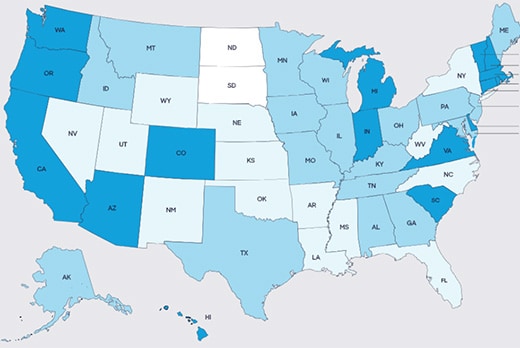Updated: Aug 15, 2024

Article highlights
- Whether you’re looking for federal or institutional aid, start by filling out the FAFSA® and complete the CSS Profile® if needed.
- Take advantage of the types of financial aid that don’t need to be paid back, like grants and scholarships, before turning to student loans.
- Working in college, whether through the Federal Work-Study program or on your own, is another way to add to your college funding.
Most students rely on multiple sources of funding to pay for college. But not all types of financial aid are the same—some are free while others are not. You should always take advantage of free money before taking on debt in the form of student loans that need to be paid back with interest. Here, we’ll dive into the pros and cons of the various types of financial aid and explain how to go about getting them.
Types of financial aid
1. Grants
Grants are like gifts. Under most circumstances, you don’t need to pay them back, making them a great choice if they’re available to you. This type of financial aid comes from the federal government, your state government, or your school, and is often based on need.
Whether you’re hoping to get federal aid (from the government) or institutional aid (from your school), the first step is filling out the FAFSA (Free Application for Federal Student Aid), which typically becomes available October 1 of each year. Fill it out as soon as possible since aid is first come, first served. There are some schools that also require the CSS Profile to help determine eligibility for grants and scholarships. Check the list of schools and programs to see if the ones you’re applying to require the CSS Profile.
2. Scholarships
Scholarships are another type of financial aid that doesn’t need to be repaid, making them an excellent way to help pay for your education. Typically, scholarships are awarded by schools and private organizations based on:
- Need
- Merit (academic, athletic, or otherwise)
- Family or background (ethnicity, military family, religion)
Contact your high school advisor for the best local resources to find scholarships or use a free online scholarship search tool.
Scholarship deadlines occur throughout the year, so keep your search going and remember to track your due dates and application materials in a spreadsheet to stay organized. You can also continue to apply for scholarships throughout your time in college.
3. Work-study and working while in college
The Federal Work-Study program is a need-based part-time employment program funded by the government. It allows students to earn money that can be used to help pay for college. If work-study is part of your financial aid package, you’ll typically be eligible for a job on campus, serving the community, or in the private sector but related to your coursework. You may be awarded work-study as a portion of your financial aid package if you’ve completed the FAFSA.
You can also work during summers and save money for school expenses, find a non-work-study part-time job that fits around your class schedule, or attend school part-time while working.
4. Family contributions and college savings plans
Money from parents, including loans and college savings accounts, typically cover more than half of students’ college costs, reports the site EducationData.org. Your family may have set up education saving accounts, such as 529 Plans, which are tax-advantaged investment accounts specifically for college costs. Or, they may have money set aside in traditional savings accounts, certificates of deposit, and money market accounts. Parents can also take out their own student loans (separate from loans where the student is the primary borrower) to help close the gap between financial aid and the cost of attendance, which is the total amount a student must pay for one academic year. Talk to your parents about how much they may be able to contribute to your education.
Once you exhaust free money, family contributions, savings, and wages, compare federal and private student loans and choose the loans that best fit your needs.
FAFSA® is a registered trademark of the US Department of Education and is not affiliated with Discover® Student Loans.
CSS Profile® is a trademark registered by the College Board, which is not affiliated with, and does not endorse, this site.










